Estimated reading time: 5 minutes
Avoiding Leaf curl in your peach and nectarine trees is all in the timing. It’s a fungal disease that can have terrible consequences, particularly for young trees.
It usually affects leaf growth, but can also affect the fruit. It rarely kills a tree, but bad cases can be devastating.
Identifying leaf curl in your peach trees
The disease usually shows up on the first leaves as they emerge. It kind of behaves like leaf cancer, causing the leaves to become swollen and deformed.
In case you haven’t seen it before, this is what a bad case of leaf curl looks like.
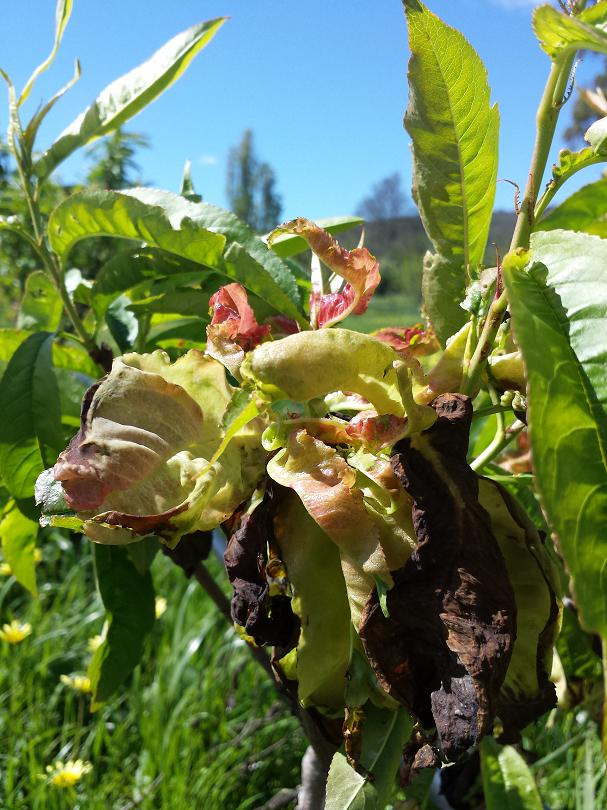
The leaves curl in on themselves, change colour, and eventually stop photosynthesising. Unfortunately this means the tree may not be getting the energy it needs.
Because this new spring growth is so badly affected, it can stop the tree from growing properly. Really severe infections can even affect the fruit.
Here’s a nectarine (below) showing typical infection symptoms on its skin. Once the fruit is affected, it may stop growing, or even fall off.
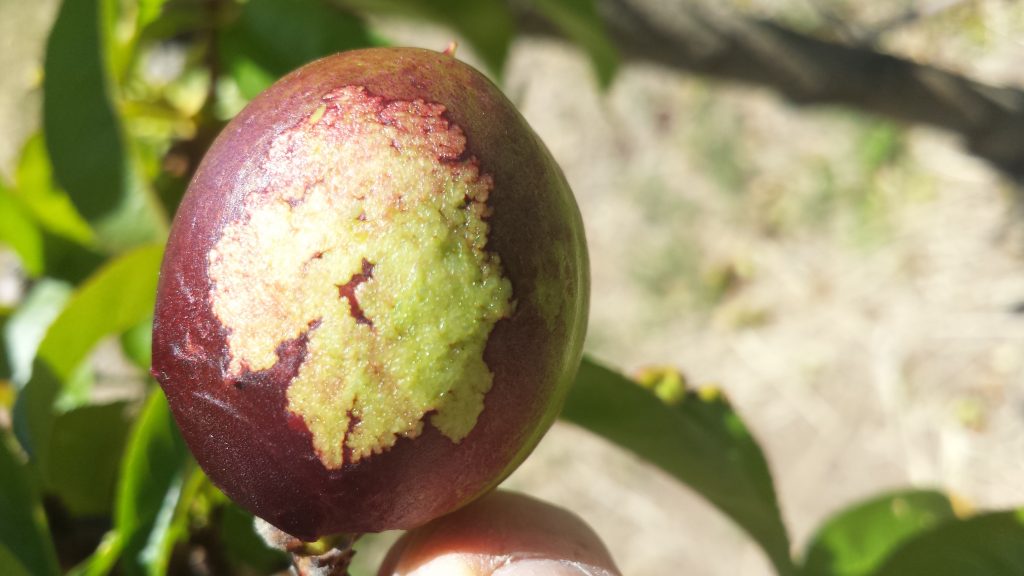
The key to avoiding leaf curl is in the timing
Have you looked at your peach and nectarine trees lately?
When you’re still mid-way through winter, it always seems too early to start thinking about spring.
And yet … the buds on our Anzac peach trees are usually starting to swell while it still feels like winter.
Anzacs are a great ‘indicator’ variety for us because they’re one of the earliest varieties to show signs of movement in spring.
The indicator variety in your garden will be the tree that flowers earliest. If you have an almond tree, this may be your indicator, as they’re also very early.
Rather than monitoring the whole orchard, we just look at the Anzacs and almonds to see what’s happening. If you want to avoid leaf curl, we strongly recommend you do the same!
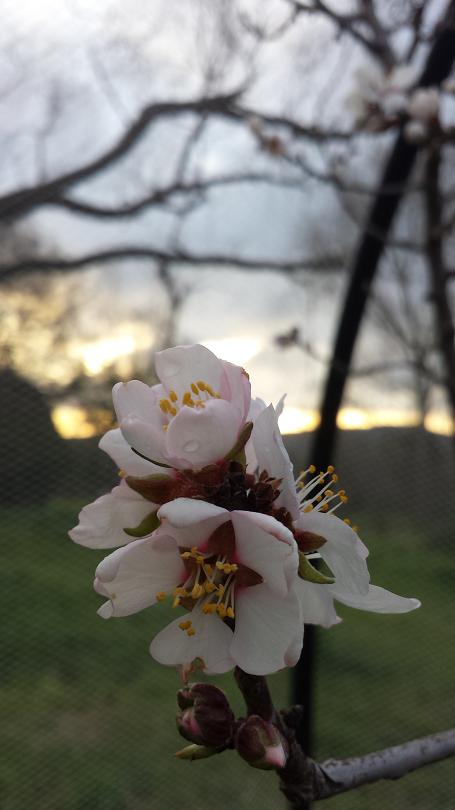
Why should you be watching out for budswell?
Budswell is the trigger for putting on the simple sprays that can help prevent Leaf curl.
But do you know what you’re actually looking for? Deciding the right time to spray can be very confusing. In fact, it’s one of the things that people most often get wrong.
This is what early budswell on a peach tree looks like. As winter turns into spring, the buds on your peach and nectarine trees will slowly swell and gradually open into flowers.
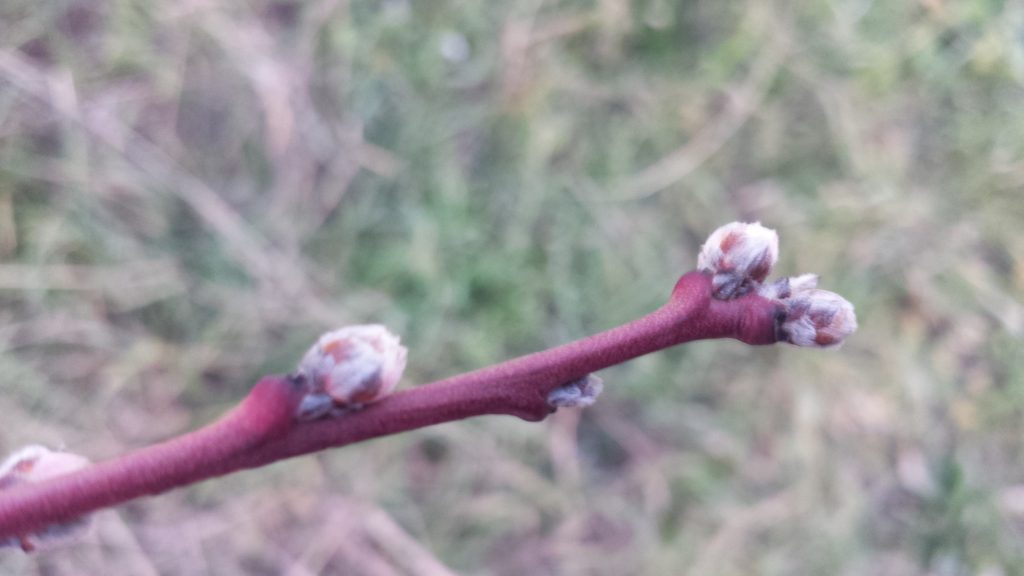
The other key information for you to think about is the weather at the time you’re planning to spray. Ideally, choose dry weather to allow the spray plenty of time to dry on the tree for best results.
If you spray in wet weather your spray will not set and is likely to get washed off. This is essentially a waste of time.
The Bureau of Meteorology has a handy rainfall forecast function. Enter your state, and then your district, then choose the date you’re interested in. You can get rainfall predictions for up to 5 days ahead.
The good news is, once you’ve figured out how to time your sprays, you’ll find that Leaf curl is (mostly) preventable.
Related Articles
Dealing with spring panic
It’s easy to panic in spring, particularly if it rains a lot and your fruit is at risk. Ease the tension by celebrating the season.
Eeek – hail on my fruit trees!
Hail at the wrong time of year can severely damage your fruit or your trees – but can you do anything to prevent it?
Peach tree leaf curl
Peach tree leaf curl disease is one of the main causes of curly leaves on your peach and nectarine trees, but it’s usually preventable.

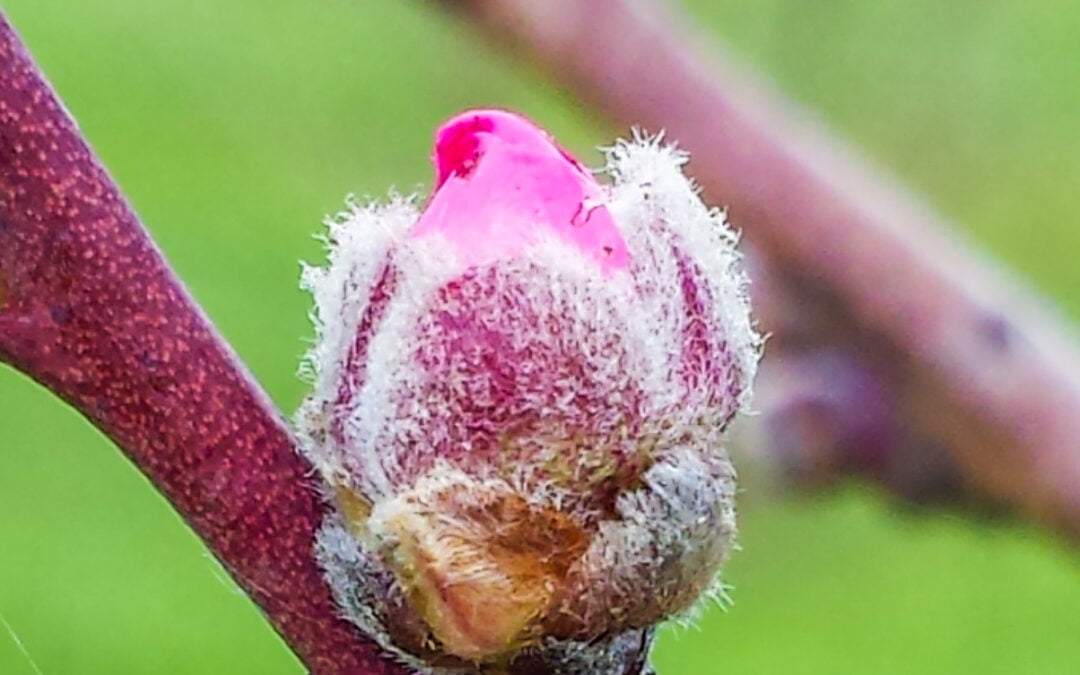


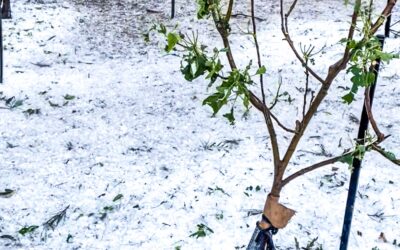
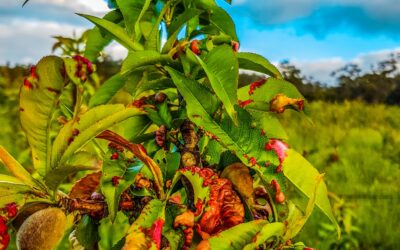


Thank you! I constanly needed to write on my website something like that. Can i include a fragment of your post to my website ?
Hi Adi, that’s great you’re enjoying our blog posts. Yes, you’re welcome to include it on your website with attribution to us, and a link back to this website would be great as well. Thanks!
Hi Katie.
Just a quick question regarding budswell monitoring Once I see the first signs on my peaches and nectarines (and almonds), I’d need to spray them but would I do the whole orchard the same time or wait for their stage/time for spraying as last year I sprayed all my trees the same time and again 7 days later as soon as my apricot tree started budding. The Bordeaux mixture made heaps and I wasn’t sure how long it will keep before I need to dispose of it.
Thanks
Lena
Hi Lena,
Yes – probably best to wait and observe your trees to make sure they are actually in budswell. And best to use a bordeaux mixture straight away (and agitate while in use) as it can settle otherwise. Might be worth trying smaller batches (it can definitely be hard to judge quantity with these things!). Good luck, Meg – Grow Great Fruit team.
Hi Katie, I love reading your fruit tree tips – thank you! Just wondering, with all this rain we’ve been having/predicted to continue to have, does application of the spray need to be done in completely dry weather? And how many hours before rainfor the best results?
Best wishes,
Miranda
Hi Miranda, it’s best to spray in conditions that allow the spray to dry before the rain arrives – often tricky to get the timing right. Anytime before the rain is OK, but effectiveness starts to fall away after 10 or so days.
I’m really grateful for your advice. Had trouble with curl leaf for years because I thought you had to spray at pink bud. (What I had been told). Sprayed at bud swell last year and got the best resuls ever. No curl leaf at all.
Hi Anne – that’s great news! Glad you’ve seen some success with this approach. Hope it’s the same this year! Meg – Grow Great Fruit team.
Thank you for these tips and advice. Just wondering though, should I be spraying for leaf curl on my newly planted bare rooted trees? They were planted mid July and I can see some bud swell action happening !
Cheers,
Mark
Do we spray all the trees at budswell? I know some of mine had leaf curl last year. does that mean they are bound to have it again this year? A number are still young trees that were planted by previous owners.
Hi Kate I think my peach tree has passed the budswell and is in full flower. Is it to late now to spray
Hi Julie, yes generally once you have flowers it is too late to do a preventative spray. You can follow some of the links in this blog for reducing fungal problems if they do appear. Good luck, Meg – GGF team.
Hi , i have a peach tree with leaf curl. Its just one tree in my garden , i have bought some copper fungicide, its 100g , im not a gardener at all and dont want to overdose my tree.
How much would i need to treat one tree 1L of mix ? ,3L , 5 L ?
And at what mix ratio please.
Hi Mike, Leaf curl is on of those diseases thast needs to be treated before there’s any sign of it – once you have it, there is no treatment until the following season. As the weather warms up, the current infection will disappear and the tree will grow thorugh it with no ill effects.
So, next spring, to prevent an outbreak, at first sign of budswell spray the tree with copper hydroxide (Kocide) following the dilution rates on the label. Follow this up 7-10 days later with a second spray – that’s it.
Hi Katie & Hugh,
I really enjoy reading your handy tips, blogs, and incredible knowledge which you very generously share….often. Have you ever considered making a book of your information that is put out? It would be such a terrific tool as it it is always easy to understand as you share important information to cover each of the seasons.
Thank you both.
Thanks for that lovely feedback – we definitely do have have a wealth of information sitting here, perhaps it should be put into a book! Meg – GGF team.
Hi
I have sprayed in Victoria now at budswell could see colour of 3-4 buds only on miniature peach opening.
This is first time sprayed had leaf curl last year on the new tree.
Should I spray again in a short time for this fruiting season?
Hi Elaine, great that you seem to have caught that window! Did you spray with copper? Generally, a follow up spray at around the 10 day mark (give or take and obviously depending on the weather, but within 14 days max) is a good idea. Good luck! Meg – GGF team.
I sprayed my miniature peach in May seemed great had buds then the rains washed them all off. Now tree covered in severe leaf curl. Can I still spray
Hi Nell, it’s a bit late to spray for leaf curl now on peaches, but you can pinch the curled leaves off, remove somewhere (hot compost is good), leaving any new green leaves to support the tree. And, you’re not the only one with leaf curl and a small peach crop, it’s a really tricky year for stone fruit! Meg – GGF team.